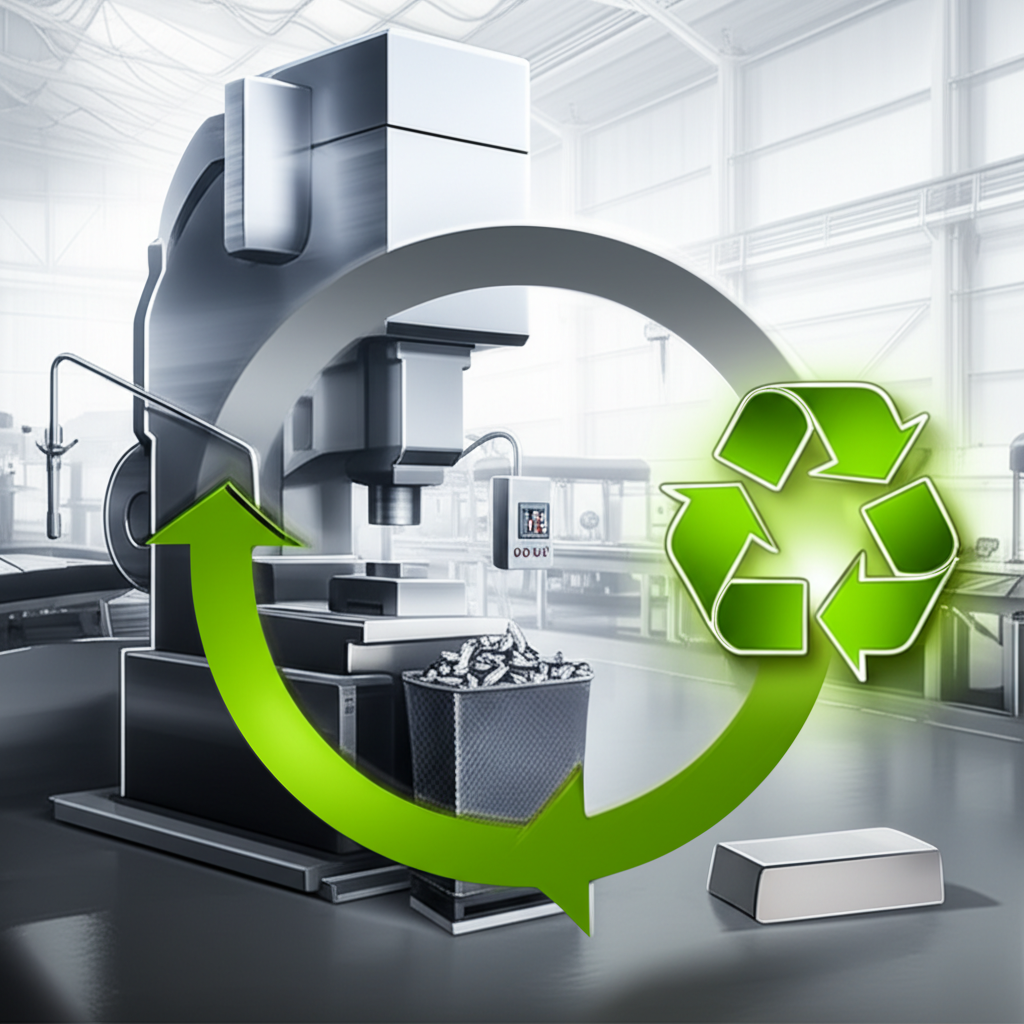Essential Sustainable Practices in the Metal Forging Industry

TL;DR
Sustainable practices in the metal forging industry are essential for minimizing environmental impact while enhancing operational efficiency. The core strategies involve improving energy efficiency with modern technology like induction heating, reducing material waste through process optimization and closed-loop recycling systems, and prioritizing the use of recycled metals such as steel and aluminum. These efforts collectively lower carbon emissions, conserve natural resources, and often lead to significant cost savings.
The Core Pillars of Sustainable Forging: Efficiency and Waste Reduction
In the high-energy environment of metal forging, the foundational principles of sustainability rest on two critical pillars: maximizing energy efficiency and minimizing material waste. These elements are not just environmentally responsible but are also crucial drivers of economic viability. By addressing the significant energy consumption and material scrap inherent in traditional forging, modern facilities can achieve a dual victory of a smaller environmental footprint and a stronger bottom line.
Energy efficiency is a primary focus for sustainable forging operations. Historically, forging has relied on large, conventional furnaces that consume vast amounts of energy and often result in heat loss. A key sustainable practice is the adoption of advanced heating technologies. For example, induction heating uses electromagnetic fields to heat metal directly and quickly, which significantly reduces energy waste compared to traditional methods. Additionally, investing in modern, well-insulated furnaces and implementing regular maintenance schedules ensures that equipment operates at peak efficiency, further cutting down on energy consumption and associated greenhouse gas emissions.
Equally important is the strategic reduction of material waste. The forging process traditionally generates a substantial amount of scrap metal. Sustainable forging aims to minimize this through several key tactics:
- Process Optimization: Utilizing advanced simulation software and precision forging techniques allows for the creation of components that are closer to their final shape (near-net-shape forging). This reduces the amount of excess material that needs to be machined away, conserving resources from the start.
- Closed-Loop Recycling: Implementing closed-loop systems is a hallmark of a sustainable operation. In this model, any scrap metal generated during production is captured, sorted, and reintroduced directly into the manufacturing line. This practice diminishes the reliance on external recycled materials and eliminates waste destined for landfills.
- Advanced Cutting Technologies: The use of high-precision methods like CNC machining and laser cutting helps optimize material usage and minimize scrap from the outset, ensuring that raw materials are used as efficiently as possible.
By integrating these efficiency and waste reduction strategies, forging companies not only align with global sustainability goals but also unlock considerable cost savings. Reduced energy bills, lower material purchasing costs, and decreased waste disposal fees all contribute to a more resilient and profitable business model that is prepared for an increasingly eco-conscious market.
Material Innovation: The Role of Recycled and Advanced Metals
The choice of materials is a cornerstone of sustainable practices in the metal forging industry. Shifting away from a reliance on virgin ore is critical, as its extraction and primary processing are energy-intensive and environmentally disruptive. Instead, the industry is increasingly turning toward recycled metals and advanced alloys as powerful tools for reducing its ecological footprint while maintaining the high performance standards required of forged components.
Leveraging recycled materials is arguably the most impactful sustainable practice in metal fabrication. According to worldsteel, steel is the most recycled material globally, and its ability to be recycled repeatedly without losing its inherent properties makes it fundamental to the circular economy. Using recycled steel and aluminum significantly lowers the demand for raw material extraction, which in turn reduces mining activities, habitat disruption, and energy consumption. As highlighted by Ternium, recycling steel dramatically cuts down the energy required compared to primary production, leading to a substantial reduction in the industry's overall carbon footprint. This shift conserves natural resources and helps mitigate climate change by lowering greenhouse gas emissions.
Beyond standard recycling, the development and use of advanced, lightweight alloys are also pushing the boundaries of sustainability. These innovative materials allow manufacturers to produce components that are just as strong, or even stronger, than traditional ones but with less material. This process, known as lightweighting, is particularly crucial in sectors like automotive and aerospace, where weight reduction directly translates to improved fuel efficiency and lower emissions over the product's lifecycle. By forging parts with advanced alloys, companies can achieve superior performance while conserving resources and contributing to the sustainability goals of their end-users.

Technological Advancements Driving Green Forging
Technology is a powerful catalyst for sustainability in the metal forging industry, enabling smarter, cleaner, and more efficient production methods. The rise of Industry 4.0 and green manufacturing technologies is transforming traditional factories into highly optimized systems that minimize environmental impact. These advancements move beyond incremental improvements to fundamentally reshape how forging processes are managed and executed.
One of the most significant trends is the integration of smart technologies and digitalization. Modern forging facilities are increasingly using sensors, the Internet of Things (IoT), and AI-driven feedback systems to monitor and control operations in real time. This allows for precise adjustments to factors like temperature, pressure, and cycle times, ensuring optimal energy use and minimal material waste. Predictive maintenance, powered by machine learning algorithms, can anticipate equipment failures before they happen, reducing unplanned downtime and preventing the material loss associated with defective production runs. This level of automation and control ensures a consistently high-quality output while operating with maximum resource efficiency.
Furthermore, innovations in the core manufacturing processes are paving the way for a greener future. Additive manufacturing, or 3D printing, is emerging as a complementary technology that produces complex parts with virtually zero material waste, as it builds components layer by layer. In forging itself, the adoption of electric arc furnaces (EAFs) for melting recycled steel is far more energy-efficient than traditional blast furnaces. These technological shifts are critical for reducing emissions and aligning the industry with global climate targets. Companies that invest in these green technologies not only enhance their sustainability credentials but also gain a significant competitive advantage through improved efficiency and precision.

A Holistic Approach: Integrating People and the Supply Chain
True sustainability in the metal forging industry extends beyond the factory floor. It requires a holistic approach that integrates people, processes, and partners into a unified strategy. A company's culture and its relationships throughout the supply chain are just as critical as its technology and material choices. This comprehensive view ensures that sustainable practices are embedded in every aspect of the business, from employee behavior to supplier selection.
Fostering a culture of environmental responsibility starts with the workforce. As noted in an article on Medium, providing training and awareness programs for employees is essential for building sustainable habits. When team members understand the impact of their actions—from turning off idle equipment to properly sorting scrap for recycling—they become active participants in the company's green initiatives. This collective effort ensures that sustainability goals are met consistently and drives continuous improvement from the ground up.
Collaboration across the supply chain is another vital component. A forging company's environmental footprint includes the impact of its suppliers and logistics partners. Therefore, it is crucial to engage with suppliers who share a commitment to sustainability, such as those who provide certified recycled metals or utilize low-emission transportation. For industries requiring high-performance components, partnering with a specialized provider is key. For example, companies seeking IATF16949 certified parts for the automotive sector can benefit from the expertise of custom forging services from Shaoyi Metal Technology, which leverages advanced hot forging processes and in-house die manufacturing to ensure both precision and efficiency. Transparent communication and collaboration with such partners help create a responsible and resilient supply chain that supports sustainability from raw material to final product.
Frequently Asked Questions
1. What are the key factors of sustainable operations in the metal industry?
The primary factors for sustainable operations in the metal industry include resource efficiency (minimizing waste and maximizing recycling), adopting energy-efficient technologies and processes, reducing overall environmental impact through lower emissions and responsible water use, and fostering stakeholder engagement and collaboration throughout the supply chain.
2. What are some examples of sustainable practices?
Examples of sustainable practices in forging include using recycled metals like steel and aluminum, implementing energy-efficient induction heating, optimizing processes to create near-net-shape parts that reduce scrap, establishing closed-loop recycling systems to reuse waste material internally, and conserving water through treatment and reuse systems.
3. What are the 5 C's of sustainability?
While not specific to the forging industry, a general framework for sustainability can be described by the 5 C's: Clean (promoting clean energy and processes), Community (ensuring the well-being of local communities), Culture (fostering a workplace culture of responsibility), Care (caring for the environment and resources), and Corporate Governance (implementing ethical and transparent business practices).
 Small batches, high standards. Our rapid prototyping service makes validation faster and easier —
Small batches, high standards. Our rapid prototyping service makes validation faster and easier — 
